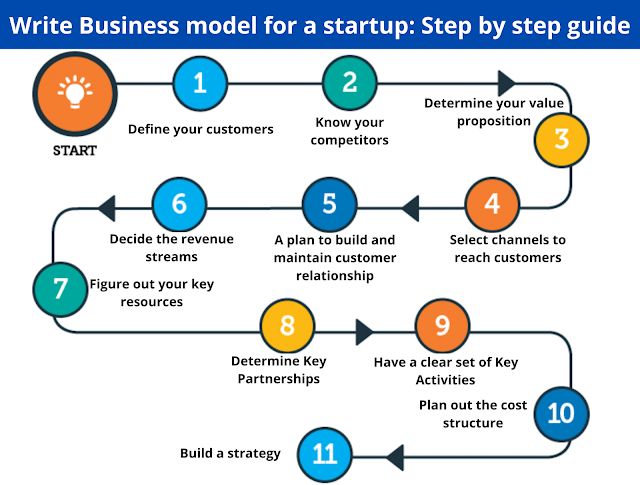A business model is a blueprint for how a startup will create, deliver, and capture value. Here are the key steps to creating a business model for a startup:
Identify Your Target Market: Determine who your target market is and what their needs and wants are. Conduct market research to gather data on your potential customers, including their demographics, behavior, and preferences.
Define Your Value Proposition: Define your unique selling proposition (USP) and how you differentiate from your competitors. Your value proposition should clearly communicate the benefits of your product or service to your target audience.
Choose Your Revenue Streams: Decide how you will generate revenue from your product or service. Consider different revenue models, such as selling products, providing services, or charging subscriptions.
Determine Your Cost Structure: Determine your cost structure, including your fixed and variable costs. This will help you to calculate your breakeven point and ensure that your revenue exceeds your costs.
Develop Your Marketing Strategy: Develop a marketing strategy that includes your messaging, distribution channels, and promotional tactics. Your marketing strategy should align with your target audience and value proposition.
Build Your Team: Build a team with the skills and expertise needed to execute your business model. Consider hiring employees, or contractors, or outsourcing tasks to freelancers or agencies.
Define Your Key Metrics: Define your key performance indicators (KPIs) and how you will measure your success. Your KPIs should be aligned with your goals and help you to track your progress over time.
Test and Iterate: Test your business model by launching a minimum viable product (MVP) and gathering feedback from your customers. Iterate based on their feedback and adjust your business model accordingly.

